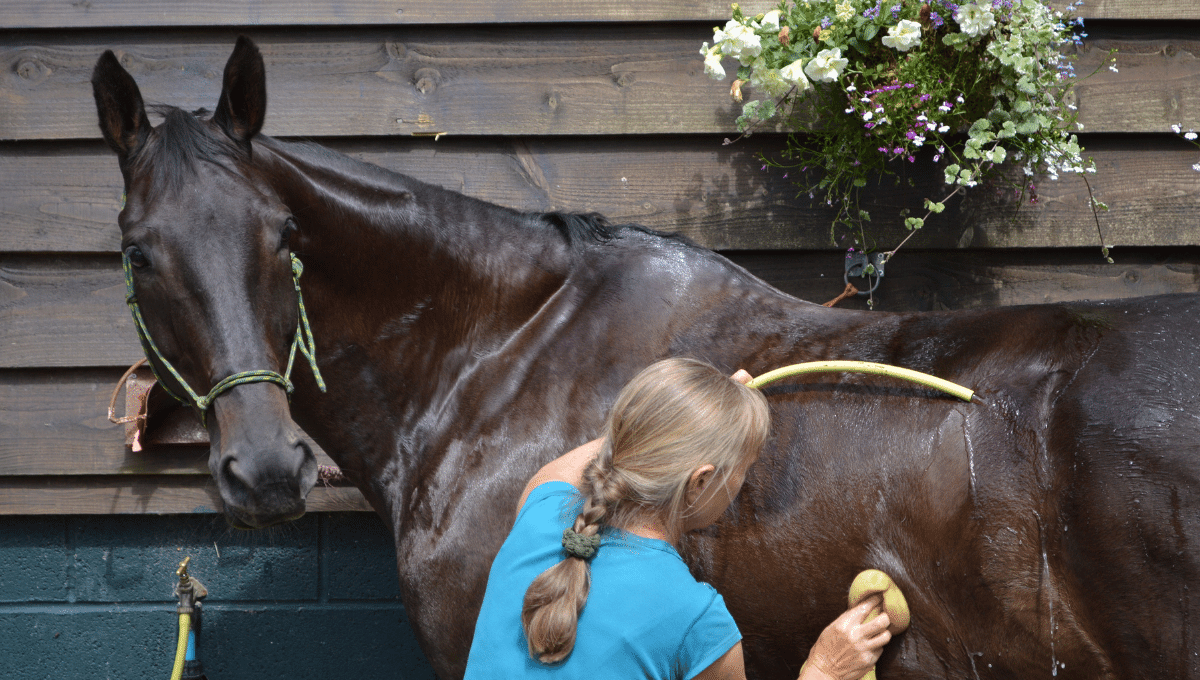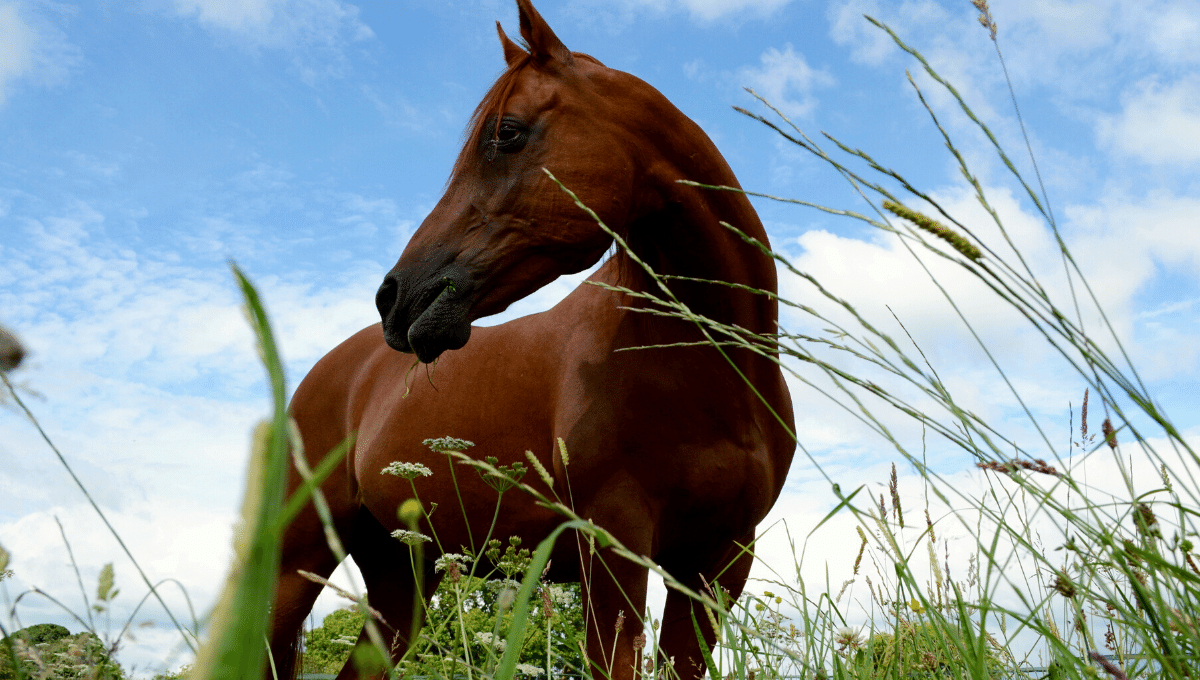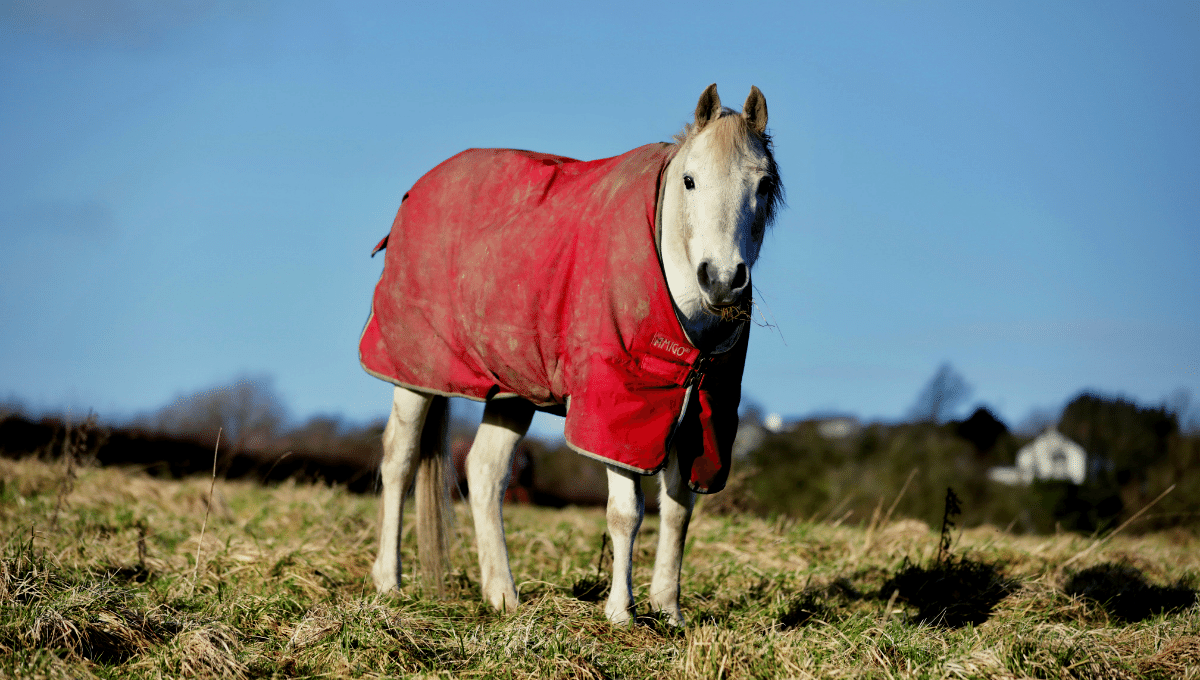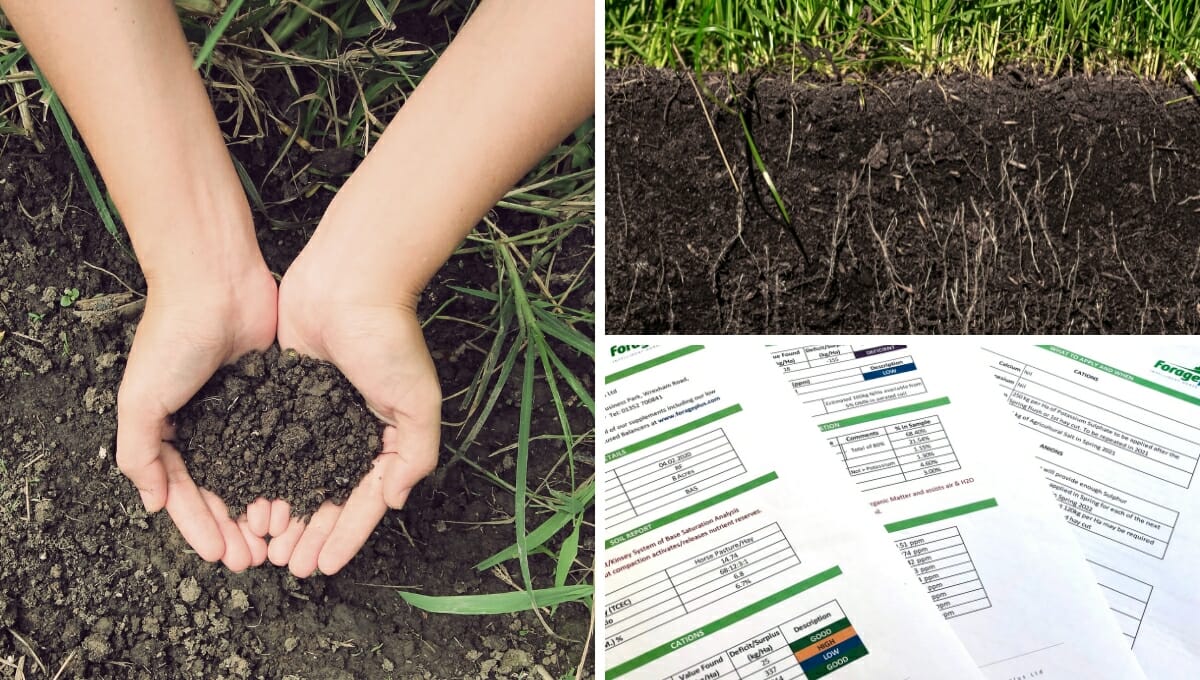Choosing the right wormer for your horse is a crucial aspect of equine health care. With a variety of anthelmintic drugs available, each effective against different types of parasites, it’s important to make an informed decision.
Factors such as the horse’s age, health status, environment, and the local prevalence of certain parasites all play a role. Additionally, the growing issue of drug resistance among parasites necessitates careful selection and rotation of wormers.
This article aims to guide you through the process of selecting the most effective wormer for your horse, ensuring optimal health and well-being.
When choosing the right horse wormer, you will want to get used to reading the labels to determine which chemical is the active ingredient, so that you make the best choice for the parasites you wish to treat. Many different brands will often contain the same drug or active ingredient.
We recommend the use of regular faecal egg counts to monitor the effectiveness of the horse wormer you use. You can also ask your vet for a blood test to monitor the effectiveness of your tapeworm control and now there is also a saliva test which appears to be as reliable as the blood test.
There is widespread resistance to pyrantel tartrate, pyrantel pamoate, piperazine and the two benzimidazoles on the market, fenbendazole and oxibendazole.
So, checking effectiveness by using worm counts and checking whether you need to worm at all is very important both for the health of your horse and also to ensure the future effectiveness of the wormers on the market.
Which horse wormer is best for a worm control plan?
It is difficult to say which wormer is best for horses. The effectiveness of a horse wormer can depend on multiple factors, such as the type of worm infestation, the age of the horse, the horse’s weight, the existing worm burden, and the overall health of the horse. Having a worm control plan tailored to each horse’s weight and needs is crucial to ensure effective treatment and prevent health risks associated with under-dosing.
Below we list the active ingredients and the horse parasites that they will treat so that the question of which wormer for my horse can be successfully answered.

Active horse wormer Fenbendazole
Fenbendazole is a type of anthelmintic drug used in the control of parasites, effective against both adult and larval stages. It is commonly used in paste form at a concentration of 10% for the control of various types of parasites in horses.
These include large strongyles, encysted early third stage, late third stage and fourth stage cyathostome larvae, small strongyles, pinworms, ascarids, and arteritis caused by fourth stage larvae of Strongylus vulgaris.
Fenbendazole is also effective against ivermectin-resistant roundworms when used in a double dose, according to an Italian study. However, it’s important to note that there is now major resistance to fenbendazole and other drugs in its class, and only ivermectin and moxidectin are still effective.
Fenbendazole Paste 10% is indicated for the control of the following:
Large strongyles (Strongylus edentatus, S. equinus, S. vulgaris), encysted early third stage (hypobiotic), late third stage and fourth stage cyathostome larvae, small strongyles, pinworms (Oxyuris equi), ascarids (Parascaris equorum), and arteritis caused by fourth stage larvae of Strongylus vulgaris in horses.
Note: In double dose, also approved for removal of encysted forms of small strongyles.
Active horse wormer Ivermectin
Ivermectin is another anthelmintic drug used to control parasites in horses. It is often administered in paste form at a dose rate of 200 micrograms per kilogram.
Ivermectin is effective against both adult and immature forms of large strongyles, allowing horses to remain free of egg-laying adults for as long as 90 days. It is also used in a regimen for heavily burdened horses, administered at three-week intervals for three treatments.
This approach removes all but the most immature and/or encysted larvae, preventing them from maturing fully to the egg-laying stage, thus reducing the horse’s reinfection of its environment. However, it’s important to note that resistance to ivermectin can develop, and this resistance will extend to other drugs in the same class, such as moxidectin.
For a broader spectrum of treatment, Ivermectin can be used as part of a combination wormer with other agents like praziquantel.
Ivermectin is indicated for the control of the following:
Large Strongyles (adults) – Strongylus vulgaris (also early forms in blood vessels), S. edentatus (also tissue stages), S. equinus, Triodontophorus spp. including T. brevicauda and T. serratus and Craterostomum acuticaudatum; Small Strongyles (adults, including those resistant to some benzimidazole class compounds) – Coronocyclus spp. including C. coronatus, C. labiatus and C.labratus, Cyathostomum spp. including C. catinatum and C. pateratum, Cylicocyclus spp. including C. insigne, C. leptostomum, C. nassatus, and C. brevicapsulatus, Cylicodontophorus spp., Cylicostephanus spp., including C. calicatus, C. goldi, C. longibursatus and C. minutus, and Petrovinema poculatum; Small Strongyles – Fourth-stage larvae; Pinworms (adults and fourth-stage larvae) – Oxyuris equi; Ascarids (adults and third- and fourth-stage larvae) – Parascaris equorum; Hairworms (adults) –Trichostrongylus axei; Large-mouth Stomach Worms (adults) – Habronema muscae; Bots (oral and gastric stages) –Gasterophilus spp. including G. intestinalis and G. nasalis; Lungworms (adults and fourth-stage larvae) – Dictyocaulus arnfieldi; Intestinal Threadworms (adults) – Strongyloides westeri; Summer Sores caused by Habronema and Draschia spp. cutaneous third-stage larvae; Dermatitis caused by neck threadworm microfilariae, Onchocerca sp.
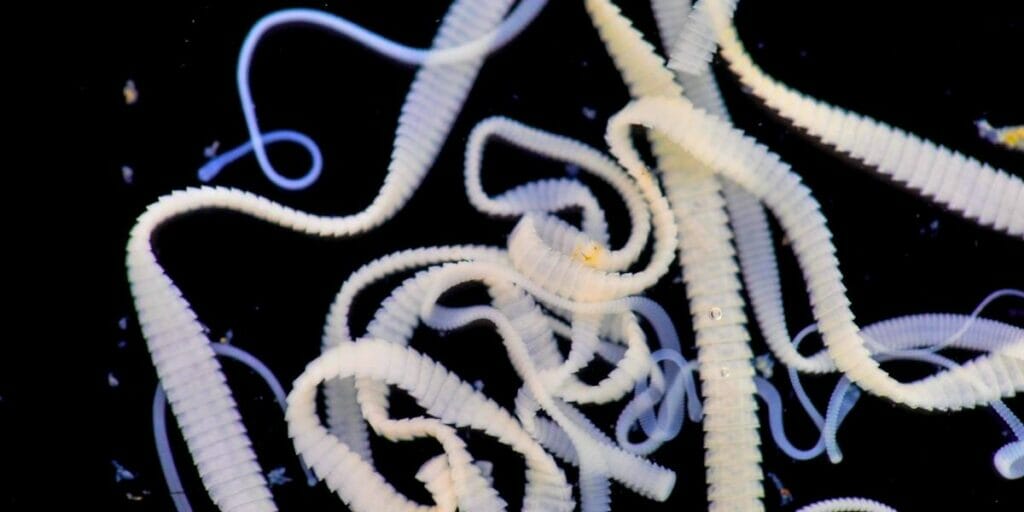
Active horse wormer Ivermectin plus praziquantel
Ivermectin combined with praziquantel is a commonly used combination wormer in horses. Ivermectin is effective against a wide range of internal parasites, including both adult and immature forms of large strongyles. However, it does not work on tapeworms.
This is where praziquantel comes in. Praziquantel is effective against tapeworms, making the combination of ivermectin and praziquantel a broad-spectrum treatment for equine parasites. It’s important to note that there is widespread resistance to many deworming drugs, but ivermectin and moxidectin are still effective. However, resistance can develop, and this resistance will extend to other drugs in the same class.
Paste provides effective treatment and control of the following parasites in horses:
Tapeworms – Anoplocephala perfoliata, Large Strongyles (adults) – Strongylus vulgaris (also early forms in blood vessels), S. edentatus (also tissue stages), S. equinus, Triodontophorus spp. including T. brevicauda and T. serratus and Craterostomum acuticaudatum; Small Strongyles (adults, including those resistant to some benzimidazole class compounds) – Coronocyclus spp. including C. coronatus, C. labiatus and C.labratus, Cyathostomum spp. including C. catinatum and C. pateratum, Cylicocyclus spp. including C. insigne, C. leptostomum, C. nassatus, and C. brevicapsulatus, Cylicodontophorus spp., Cylicostephanus spp., including C. calicatus, C. goldi, C. longibursatus and C. minutus, and Petrovinema poculatum; Small Strongyles – Fourth-stage larvae; Pinworms (adults and fourth-stage larvae) – Oxyuris equi; Ascarids (adults and third- and fourth-stage larvae) – Parascaris equorum; Hairworms (adults) –Trichostrongylus axei; Large-mouth Stomach Worms (adults) – Habronema muscae; Bots (oral and gastric stages) – Gasterophilus spp. including G. intestinalis and G. nasalis; Lungworms (adults and fourth-stage larvae) – Dictyocaulus arnfieldi; Intestinal Threadworms (adults) – Strongyloides westeri; Summer Sores caused by Habronema and Draschia spp. cutaneous third-stage larvae; Dermatitis caused by neck threadworm microfilariae, Onchocerca sp.
Active horse wormer Moxidectin
Moxidectin is known for its long-lasting effect, as it is taken up by the body fat and slowly released over time. This allows for an extended interval between dewormings, up to 120 days. Moxidectin is particularly effective for adult horses due to its long-lasting effect.
Moxidectin is effective against various types of parasites, including small strongyles, and it is one of the few dewormers that can reliably remove dormant forms of these parasites. However, it’s important to note that moxidectin has the smallest margin of safety among dewormers, with triple dosing potentially causing nervous system toxicity.
It should also never be used in foals or emaciated animals because it distributes to the body fat and without sufficient fat it can cause liver damage. Resistance to moxidectin can develop, and this resistance will extend to other drugs in the same class, such as ivermectin.
Moxidectin provides effective treatment for the following:
Strongylus vulgaris – (adults and L4/L5 arterial stages); Strongylus edentatus (adults and tissue stages); Triodontophorus brevicauda (adults); Triodontophorus serratus (adults), Small Strongyles (adults) Cyathostomum spp., including Cyathostomum catinatum, Cyathostomum pateratum, Cylicostephanus spp, Cylicostephanus calicatus, Cylicostephanus goldi, Cylicostephanus longibursatus, Cylicostephanus minutus; Cylicocyclus spp, including Cylicocyclus insigne, Cylicocyclus leptostomum, Cylicocyclus nassatus; Cylicocyclus radiatus; Coronocyclus spp., including Coronocyclus coronatus, Coronocyclus labiatus, Coronocyclus labratus; Gyalocephalus, Petrovinema poculatus. Small Strongyles: Undifferentiated lumenal larvae. Encysted cyathostomes: Late L3 and L4 mucosal cyathostome larvae. Ascarids: Parascaris equorum – (adults and L4 larval stages), Pinworms: Oxyuris equi (adults and L4 larval stages), Hairworms: Trichostrongylus axei (adults), Large-mouth stomach worms: Habronema muscae, Horse stomach bots, Gasterophilus intestinalis – (2nd and 3rd instars); Gasterophilus nasalis – (3rd instars).
Active horse wormer Moxidectin plus Praziquantel
Moxidectin combined with praziquantel is a potent combination wormer. Moxidectin is known for its long-lasting effect against a variety of parasites, including small strongyles. Moxidectin has the smallest margin of safety among dewormers, so this must be taken into careful consideration.
Praziquantel is effective against tapeworms. Therefore, the combination of moxidectin and praziquantel provides a broad-spectrum treatment for equine parasites.
Tapeworms – Anoplocephala perfoliata, Strongylus vulgaris- (adults and L4/L5 arterial stages); Strongylus edentatus (adults and tissue stages) Triodontophorus brevicauda (adults); Triodontophorus serratus (adults) Small Strongyles (adults) Cyathostomum spp., including Cyathostomum catinatum, Cyathostomum pateratum; Cylicostephanus spp., including Cylicostephanus calicatus, Cylicostephanus goldi, Cylicostephanus longibursatus, Cylicostephanus minutus; Cylicocyclus spp., including Cylicocyclus insigne, Cylicocyclus leptostomum, Cylicocyclus nassatus; Cylicocyclus radiatus; Coronocyclus spp., including Coronocyclus coronatus, Coronocyclus labiatus, Coronocyclus labratus; Gyalocephalus, Petrovinema poculatus, Small Strongyles: Undifferentiated lumenal larvae, Encysted cyathostomes: Late L3 and L4 mucosal cyathostome larvae, Ascarids: Parascaris equorum (adults and L4 larval stages) Pinworms: Oxyuris equi (adults and L4 larval stages)Hairworms: Trichostrongylus axei (adults), Large-mouth stomach worms: Habronema muscae (adults), Horse stomach bots: Gasterophilus intestinalis – (2nd and 3rd instars); Gasterophilus nasalis – (3rd instars)
Active horse wormer Oxibendazole
Oxibendazole has been found to be particularly effective against roundworms. However, it’s important to note that there is now major resistance to oxibendazole and other drugs in its class, such as fenbendazole. Despite this, some parasites are still sensitive to these drugs. Despite resistance, Oxibendazole is still considered one of the good horse wormers for certain parasites.
When using oxibendazole, it’s crucial to read the ingredients as many different brands actually contain the same drug. It’s also important to understand that resistance will be present across an entire drug class, so parasites resistant to oxibendazole will also be resistant to fenbendazole.
Large strongyles (Strongylus edentatus, S. equinus, S. vulgaris); small strongyles (species of the genera, Cylicostephanus, Cylicocyclus, Cyathostomum, Triodontophorus, Cylicodontophorus, and Gyalocephalus); large roundworms (Parascaris equorum); pinworms (Oxyuris equi) including variouslarval stages; and threadworms (Strongyloides westeri).
Active horse wormer Pyrantel Pamoate
Pyrantel Pamoate is effective against a variety of parasites, including ascarids (Parascaris equorum). However, it’s important to note that there is now widespread resistance to pyrantel pamoate, as well as to other drugs in its class, such as pyrantel tartrate. Pyrantel Pamoate is particularly important for young horses, who are more susceptible to certain parasites.
Despite this, some parasites are still sensitive to these drugs. It’s also important to understand that resistance will be present across an entire drug class, so parasites resistant to pyrantel pamoate will also be resistant to pyrantel tartrate.
Critical (worm count) studies in horses demonstrated that Strongid Paste administered at the recommended dosage was efficacious against mature infections of Strongylus vulgaris (>90%), S. edentatus (69%), S. equinus (>90%), Oxyuris equi (81%), Parascaris equorum (>90%), and small strongyles (>90%).
Note: At double dose, approved for removal of tapeworms (may need to repeat in 2 weeks for best results).
Active horse wormer Piperazine
Piperazine has been found to be effective against roundworms. However, it does not work on small strongyles and has a narrow spectrum of activity. Despite its effectiveness against certain parasites, it’s important to note that there is now resistance to piperazine. Piperazine is one of the many worming products available for controlling roundworms.
Control of large and small strongyles, roundworms and pinworms.
Active horse wormer Pyrantel Tartrate
Pyrantel Tartrate is used for the prevention of Strongylus vulgaris larval infections and control of adult large strongyles. It is often administered as a daily dewormer.
Prevention of Strongylus Vulgaris larval infections; control of adult large strongyles (S. Vulgaris, S. edentatus); adult and 4th stage larvae small strongyles (Cyathostomum species, Cylicocyclus species., Cylicostephanus species. Cylicodontophorus species, Poteriostomum species), Triodontophorus, species; adult and 4th stage larvae pinworms (Oxyuris Equi) and adult and 4th stage larvae ascarids (Parascaris equorum).
More information on horse wormers and faecal egg counts
All information is taken from the online course on worming by Eleanor M. Kellon VMD. You can find a link to her website here.
We advise that testing of worm samples is carried out within 5 hours of sampling unless the laboratory is sieving for larvae. This is because the eggs of small strongyles (redworm) will hatch if the sample is not tested within this time.
If the lab testing the faecal sample does not sieve for larvae and counts those as well as eggs then you may have a result which is a false negative for small strongyles. As small strongyles are so dangerous if they emerge from their encysted form then accurate testing for the adult form is very important.
You should also be sure that the lab carrying out your faecal testing uses a centrifuge as part of their testing.
It is crucial to know the worming history of new arrivals and to worm them for specific types of worms such as encysted small redworm and tapeworm. Horse owners should be aware of the variety of equine worming products available and choose the most effective ones for their horses.
Explore our other articles on horse care & management here.


